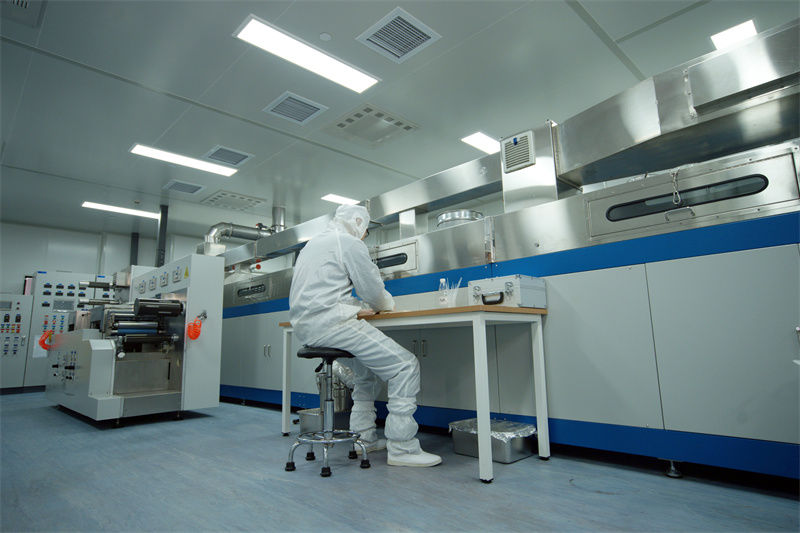Ferrite is a metal oxide with ferromagnetism. In terms of electrical properties, the resistivity of ferrite is much larger than that of metal, alloy magnetic materials, but also has higher dielectric properties. The magnetic properties of ferrite also show high permeability at high frequency. Therefore, ferrite has become a widely used non-metallic magnetic material in the field of high frequency weak current. Due to the low magnetic energy stored in the unit volume of ferrite, saturation magnetization is also low (usually only 1/3 ~ 1/5 of pure iron), thus limiting its application in the field of low frequency strong electricity and high power requiring higher magnetic energy density. Ferrite belongs to the category of semiconductor electrically, so it is also called magnetic semiconductor. Magnetite (mainly Fe3O4) is a simple ferrite. .. As early as in the early 20th century, synthesis of ferrite, in the 1930s, France, Japan, Germany, the Netherlands have carried out systematic research. The Netherlands has been producing ferrite soft magnetic materials since 1946. Industrial production of ferrite began in China around 1956. Ferrite has been widely used in communication and broadcasting, computing technology, automatic control, radar navigation, navigation, satellite communication, instrument measurement, printing display, pollution treatment, biomedicine, high-speed transportation and so on. Ferrite is a compound oxide composed of iron and one or more other metals. For example, the chemical formula of spinel ferrite is MeFe2O4 or MeO·Fe2O3, in which Me is a bivalent metal ion (such as Mn2+, Zn2+, Cu2+, Ni2+, Mg2+, Co2+, etc.) with similar ionic radius to the bivalent iron ion (Fe2+) or a variety of metal ion groups with an average chemical valence of bivalent.

Ferrite is divided into soft ferrite and permanent ferrite. 1. Soft magnetic ferrites have manganese ferrite (MnO·Fe2O3), zinc ferrite (ZnO·Fe2O3), nickel zinc ferrite (Ni-Zn·Fe2O4), manganese magnesium zinc ferrite (Mn-Mg-Zn·Fe2O4) and other single-component or multi-component ferrites. The resistivity is much larger than the metal magnetic materials, and has higher dielectric properties, so there are both ferromagnetic and ferroelectric and ferromagnetic and piezoelectric ferrites. At high frequency, it has much higher permeability than metallic magnetic materials (including Fe-Ni alloy, Al-Si-Fe alloy), and is suitable for several KHZ to several hundred MHZ frequency. Processing ferrite belongs to the general ceramic process, so the process is simple, and save a lot of precious metals, low cost. The saturation flux density Bs of ferrite is low, usually only 1/3 ~ 1/5 of iron. The low magnetic energy stored by ferrite per unit volume limits its application in low frequency, high electric and high power fields that require high magnetic energy density. It is more suitable for high frequency low power, weak current applications. Nickel-zinc ferrite can be used as antenna magnet in radio and intermediate frequency transformer core, and manganese zinc ferrite can be used as line-output transformer core in television receivers. In addition, soft magnetic ferrite is also used in the communication lines of the sensitizer and filter core. In recent years, it is also used as high frequency magnetic recording transducer (magnetic head). 2. Permanent magnet ferrites include barium ferrite (BaO·6Fe2O3) and strontium ferrite (SrO·6Fe2O3). High resistivity, belongs to the type of semiconductor, so the eddy current loss is small, high coercivity, can be effectively used in the air gap magnetic circuit, especially suitable for small generators and motor permanent magnet. It does not contain the precious metal nickel, cobalt, etc., the raw material source is rich, the process is not complicated, the cost is low, can replace the aluminum nickel-cobalt permanent magnet. It has a lower large magnetic energy product (B+H)m and is therefore larger than a metal magnet for equal magnetic energy. Its temperature stability is poor, brittle texture, fragile, shock resistance, not suitable for measuring instruments and precision requirements of magnetic devices. Permanent magnet ferrite products are mainly anisotropic series. They can be used in the production of permanent magnet ignition motor, permanent magnet motor, permanent magnet separator, permanent magnet hanging head, magnetic push bearing, magnetic separator, loudspeaker, microwave devices, magnetic therapy tablets, hearing AIDS, etc.
The above is the relevant information of ferrite magnetic materials, I hope to help you, welcome to consult patronage!!!

gotop